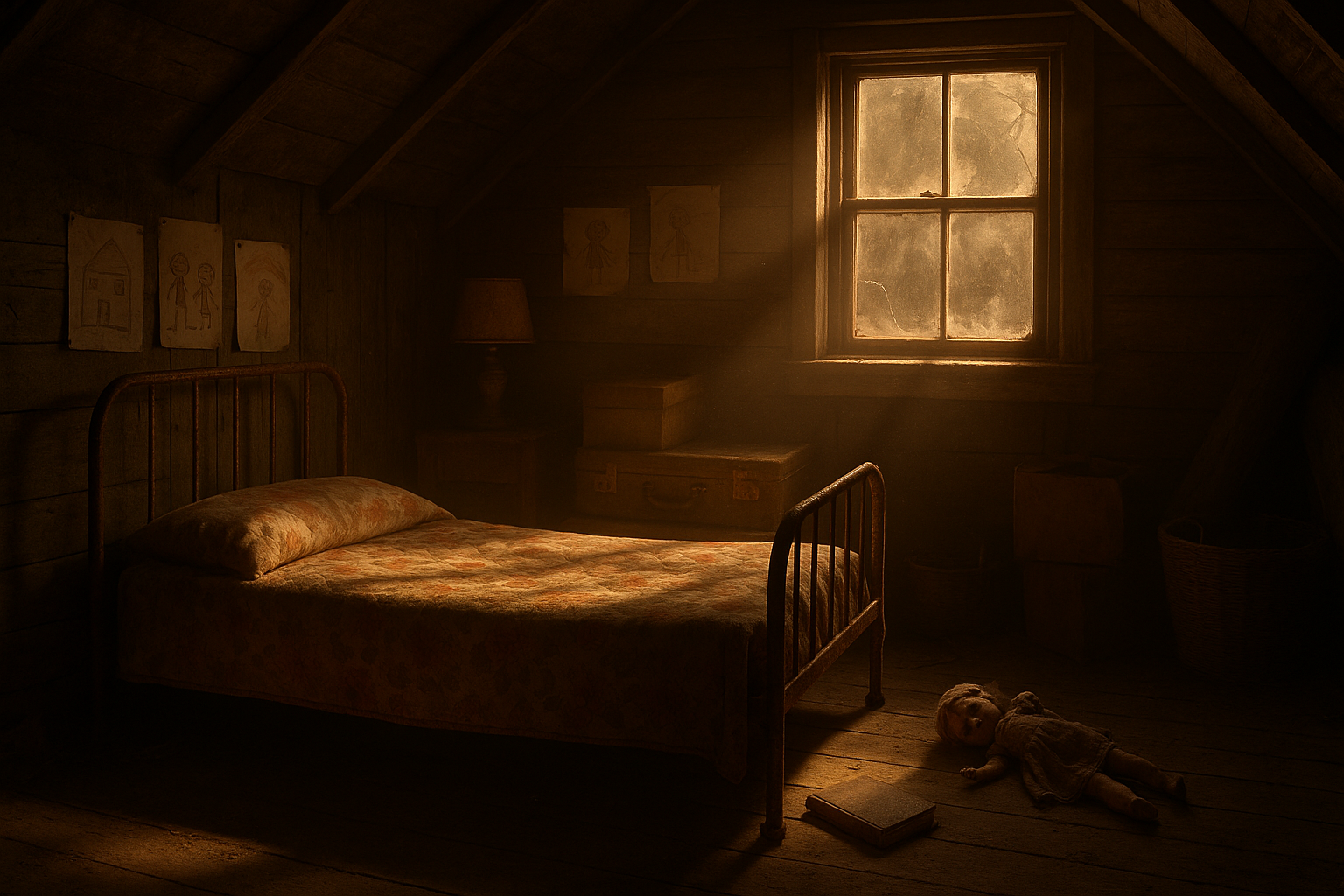In January 2024, 33-year-old software engineer Mark Reilly inherited his grandmother’s house in Savannah. Built in 1912, it had been in the family for generations. After her passing at 94, Mark decided to move in temporarily to escape the pressure of city life.

In the attic, he found a door sealed with a heavy padlock and a note: “Do not open. Ever.” Signed simply: Eleanor.
He figured it was nothing more than harmless eccentricity.
His grandmother had always been quirky — she collected porcelain dolls and had rigid daily routines. Still, he left the door alone.
Until letters started showing up in the mailbox — all addressed to Annie Weller.
He asked around the neighborhood. An elderly neighbor told him flatly:
“There was a girl in that house once. Then she vanished. Police dropped it. Your grandmother… she kept to herself after that.”
On the sixth day, a major storm hit. The roof began to leak, and Mark had no choice but to go into the attic to inspect. He broke the padlock.
Behind the door was a small hidden room.
A rusted iron bed. Old children’s clothing. Stacks of storybooks and faded drawings. A school notebook embroidered with the name: Annie.
He immediately called 911.
Police arrived and launched an investigation. Forensic teams discovered a hidden compartment beneath the floorboards. Inside: the skeletal remains of a young girl, wrapped in an old blanket. Estimated age: 12 years old.
DNA tests were inconclusive. But what helped identify her was a water-damaged diary tucked beneath the bed.
It belonged to a girl named Annie Weller. Entries ranged from 1969 to 1971. She described being kept indoors by “Mama Eleanor,” not being allowed to go to school, and “waiting quietly.”
Her final entry read:
“Mama hasn’t come in three days. I miss school.”
Investigators dug through sealed child welfare records. They uncovered a 1972 foster care report involving Eleanor Reilly. The case was marked “closed — insufficient evidence.”
Further research revealed that Eleanor had briefly served as a foster caregiver in the late ’60s. Annie Weller had been placed in her care in 1969 — and never seen again.
The story exploded in the media.
Authorities began re-investigating dozens of cold foster care cases from the 1960s and ’70s. The home was designated a crime scene.
Mark was devastated. His grandmother had read him bedtime stories, made cookies, and helped with his homework. He never imagined she’d harbored such a dark secret.
He moved out within a week.
The home was sold.
And Annie — finally — was laid to rest under her real name.

A nonprofit was formed in her honor to reopen forgotten child abuse cases in Georgia.
Mark now advocates for transparency in foster care records.
He doesn’t defend what happened. But he refuses to let Annie’s story go silent again.
A true story. A long-hidden crime. A mystery finally solved — in an attic no one was ever supposed to enter.

